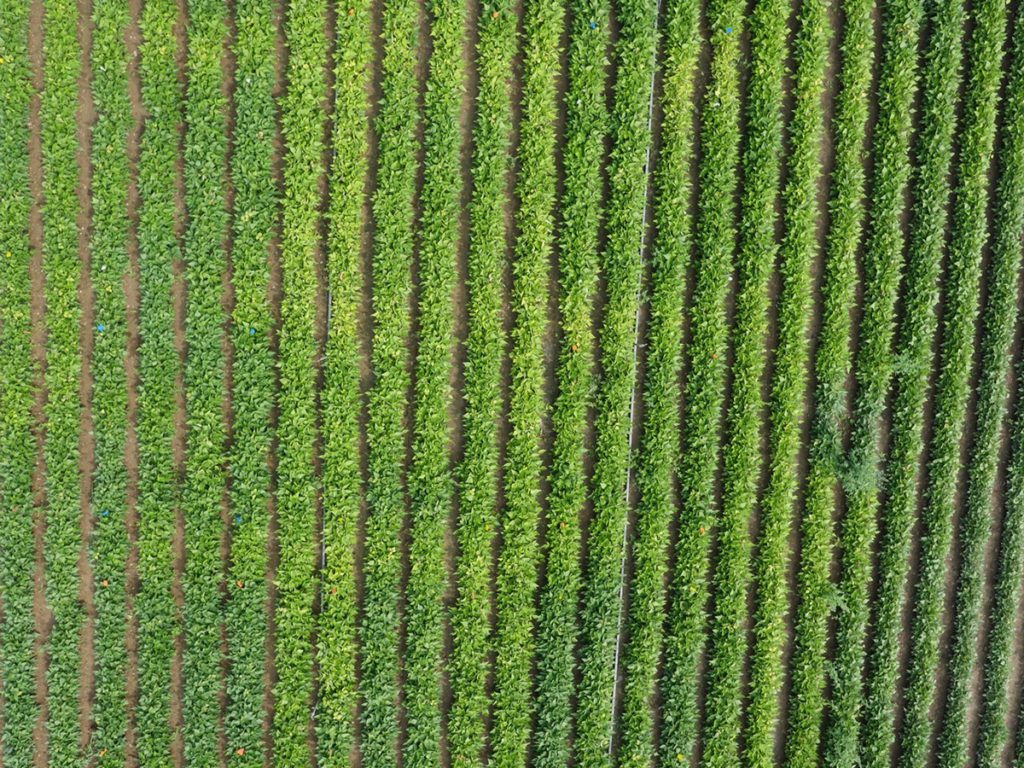Apr 11, 2017White mold snap bean treatment viewed
Snap beans, a legume more commonly known as the green bean and waxy yellow bean, generates hundreds of millions of dollars in agricultural revenue annually. It’s the fifth largest vegetable crop in the U.S., and New York state ranks second in processing and fresh market production. Every year, however, white mold, caused by the fungus Sclerotinia sclerotiorum, wipes out a substantial number of snap bean crops across the state and the nation.
“White mold is among the most devastating and recalcitrant plant diseases worldwide and results in major losses to numerous vegetable and field crops, such as sunflower, dry beans and soybeans,” said Sarah Pethybridge, assistant professor in the Plant Pathology and Plant-Microbe Biology Section of the School of Integrative Plant Science and the project’s principal investigator.
“Our project aims to use a multidisciplinary approach to improve detection of the right time to control white mold in order to reduce crop loss,” she said.
In recent years, Pethybridge and her team discovered that snap bean growers manage white mold by proactively applying fungicides to fields considered at high risk. Yet due to poor timing of application, significant failures continue to occur, Pethybridge said.
She is collaborating with Cornell Cooperative Extension and Rochester Institute of Technology’s (RIT) Chester F. Carlson Center for Imaging Science to get a fix on precisely when to act and how best to do it. The findings could have important implications for farm economics and environmental protection, as the research could provide guidance for more effective applications of costly fungicides.
“For this disease, the main critical issue is trying to protect the flowers because the spores of the pathogen can only affect them. It then uses the flowers as a nutrient source and damages the green tissue,” said Pethybridge.
With the help of RIT’s sensors and drones, the researchers plan to collect spectral imagery and light detection and ranging (lidar) data, to detect spectral and structural indicators that are related to the development of the plant’s flowers. Many of these remote sensing tools provide inputs the naked eye cannot see, for example, collecting near-infrared light to assess plant stress.
“This way we can pinpoint the optimal times to use fungicide for the greatest outcome and economic impact – and we can better use the tools we already have to be able to manage the disease,” Pethybridge said.
But all snap bean fields are not equal. The density of the snap bean canopy also impacts its susceptibility to white mold. Pethybridge’s team will model the conditions under which plants are at highest risk and monitor them with different sensors that measure green leaf area or provide assessments of canopy structure, which in turn impacts the microclimate within a crop.
Thanks to their partnership with Cooperative Extension, outcomes will be available for immediate adoption by industry and growers who are already deploying sophisticated sensors and aerial systems to monitor their crops.
“This project offers a unique opportunity to realize the benefits of precision agriculture by providing robust and reliable support to decision-making that influences both profitability and productivity,” Pethybridge said.
The project received $299,692 from the U.S. Department of Agriculture’s Agriculture and Food Research Initiative. Co-principal investigators include Jan van Aardt and Carl Salvaggio of RIT’s Chester F. Carlson Center for Imaging Science, and Julie Kikkert of Cornell Cooperative Extension’s Regional Vegetable Team.
-Jennifer Savran Kelly, Cornell University

















